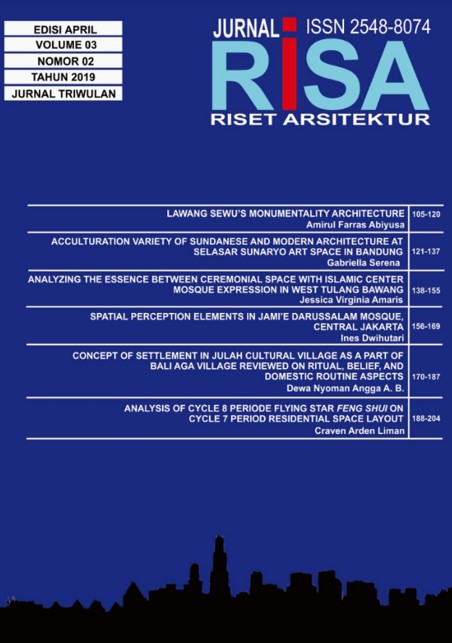LAWANG SEWU’S MONUMENTALITY ARCHITECTURE
DOI:
https://doi.org/10.26593/risa.v3i02.3274.105-120Abstract
Abstract- Lawang Sewu is a historic cultural heritage building that became one of the leading tourist attractions in Semarang City. The building that was built in 1904 and completed in 1918 has experienced some changes in function and ownership. Lawang Sewu was originally the administrative office of Nederlands-Indische Spoorweg Maatschappij (NIS). NIS is a private company engaged in the field of railways. Lawang Sewu also witnessed the 5 days battle in Semarang that occurred on 14 to19 August 1949. It was marked by the location of Tugu Muda Monument located on the west side of Lawang Sewu. Apart from the historical side, spatial relationships between Lawang Sewu and Tugu Muda Monument in the area, making the building of the former NIS office is significant. Architecturally, the significance can be explained in the context of the monumentality of the building.
The Monumentality of Lawang Sewu is explained gradually from several aspects. First, an architectural object can be monumental seen from the link between architecture and monument. Second, the historical and cultural dynamics attached to the building. Third, the building relationship with the surrounding environment and its architectural character. Referring to the concept of architectural monumentality enclosed by Yoshinobu Ashihara and Louis Kahn, monumentality is described based on the image of the singularity of buildings that arise from its relationship with the surrounding environment and the quality of the atmosphere of space formed from building elements.
As an architectural object, Lawang Sewu has the required value in the definition of monuments and monumental properties. These values include aspects of history, technology, architecture, and culture. Not only has monumental values, Lawang Sewu also experienced the dynamics of changing the meaning of monuments as described in the Nine Points on Monumentality. In addition, Lawang Sewu is a building inherent in the collective memory of society. This is evidenced from the name Lawang Sewu which is actually a nickname. In the architectural context, Lawang Sewu is able to show the monumental value of its unique impression on Tugu Muda Monument Area. Then, both the architectural elements and the structures seen in the atmosphere of space in Lawang Sewu able to convey the image of a certain period. Elements of buildings with economic value and high technological updates also form the value of Lawang Sewu monumentality.
Key Words: significance, monumentality, history, culture, Lawang Sewu, railway












